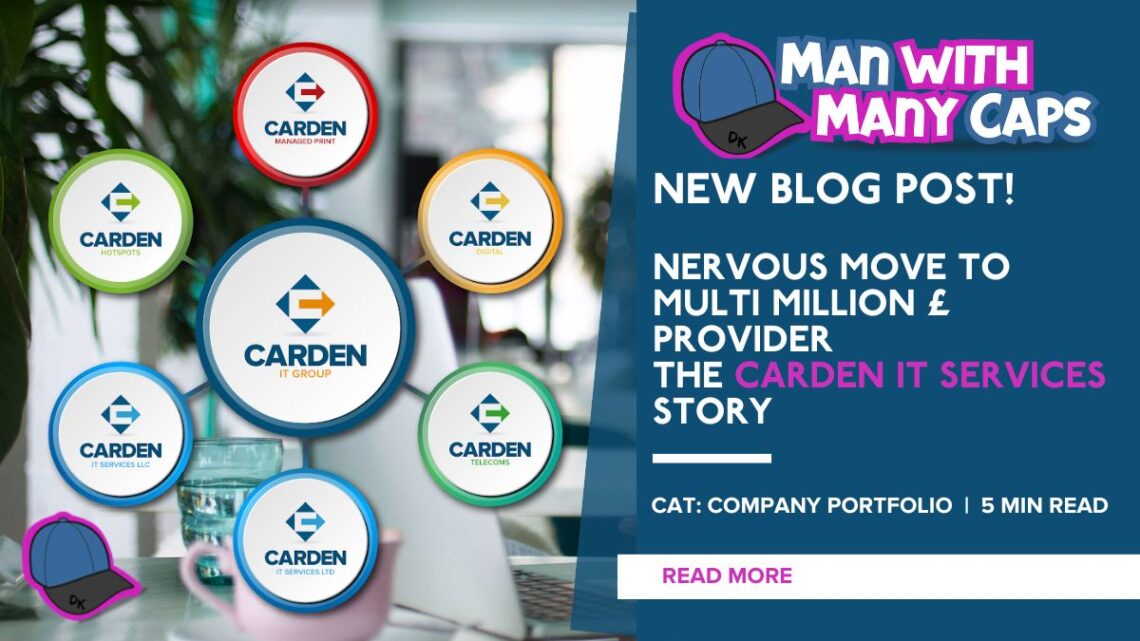Intro to The Carden IT Services Story
So here is the Carden IT Services story. And I have to say, I am very proud of what has been built today. But that doesn’t come without the help of my fantastic business partners, Directors and team, who I won’t name here for their privacy reason (just head to Companies House to see).
It has to be said, starting a company in the service based field is very tough, but comes with its reward of recurring revenue.
Should you be in a position of setting up a service based business, you must focus on the obvious such as service delivery, but it is essential to have well defined processes, and automate anything you can. Sure, this comes at subscription costs, but those subscriptions will be cheaper than the equivariant manpower.
How Did I Get Into IT?
Long before I had a company name, an office, or even a job in IT, I was that person. You know, the one friends and family always called when their computer was acting up. Whether it was building a new PC from scratch or rescuing a machine on its last legs, somehow I’d become the unofficial IT department for half my postcode. And, of course, I did it all for free, because that’s what you do when you’re “good with computers,” right?
In 1999, I got my first proper job in IT, and if I’m honest, I was pretty lucky to get it. No qualifications, no formal experience, just a lot of enthusiasm and the ability to keep calm under pressure. It was a first-line support role, and it didn’t take long for me to realise that working in IT was as much about problem-solving and people skills as it was about the technology itself.
Three years later, I moved up to a site engineer role for a Managed Service Provider. This was before search engines were the go-to for answers, you couldn’t just type in an error code and get a quick fix. You either knew it, or you figured it out the hard way, and that kept you sharp.
Around that time, I started helping a few friends in business who had let’s just say… less than impressive IT support. It was manageable at first, but the more work I took on, the harder it became to balance both roles. Eventually, I decided to stop splitting myself in two, and in 2007, I took the leap into self-employment. At this point, I would like to thank the friends who I burned ears off discussing “should I, shouldn’t I”..
How It Started…
To keep myself focused (and away from the distractions of home), I rented a small high street shop for £400 a month. It was meant to be like a high street office, much like an Estate Agents. But that’s when something unexpected happened, everyday people saw the sign and started bringing in their PCs for repair. The footfall was so steady that, before long, we’d officially become a shop. In hindsight, it was a wise move — not just because of the extra income, but because it sent a clear message to my friends: my time is now my business, and yes, I do need to charge you for it.
In 2009, Carden Computers was born. Our main focus was always business-to-business IT services, but the home user repairs became a profitable sideline. At our peak, we turned over £120,000 a year from that tiny 5m x 5m space, quite impressive if I don’t say so myself.
By 2017, our business to business IT consultancy had grown to the point where we needed to focus entirely on it. We sold the shop to someone who could give the home user side the attention it deserved, and we rebranded as Carden IT Services to reflect our B2B direction.
From there, we expanded, adding telecoms, managed print, digital marketing, and corporate WiFi to our offering.
How it’s Going…
Fast forward to today, and Carden IT Services is a multi-million-pound business with offices in London, Brighton, and Cheshire, serving clients across the UK. And with the addition of our USA company, we have offices in New York and New Jersey.
When my business partner moved to the USA, we formed Carden IT Group and split our services into specialist companies: Carden Telecoms, Carden Digital, Carden Managed Print, and Carden Hotspots.
Looking back, it’s been a journey shaped by curiosity, hard work, and a willingness to adapt. From fixing family PCs for free to leading a group of specialist companies, it’s been quite a ride — and the best part is, there’s still more to come.
